CHINA
Beijing

Beijing
Beijing
Beijing is the capital of the People's Republic of China and one of the most populous cities in the world, with a population of about 21 million in 2020. The city is the country's political, cultural, educational, financial and commercial center. The metropolis is located in the north of China. Beijing is divided into 14 urban and suburban neighborhoods and two rural provinces. As a municipality, Beijing is under the direct supervision of the national government.
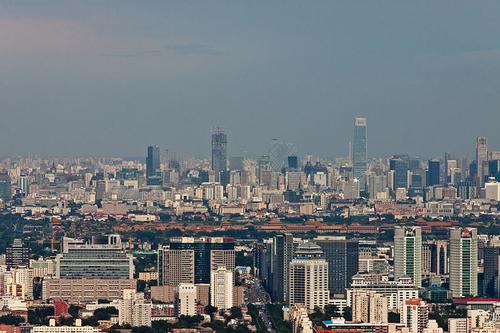 BeijingPhoto:Ahenobarbus CC 2.0 Unported no changes made
BeijingPhoto:Ahenobarbus CC 2.0 Unported no changes made
Beijing is one of the four great ancient capitals of China. It has been the linchpin of China's history for centuries. All periods of rich history have left traces in the form of beautiful palaces, temples and huge stone walls and gates. Art treasures and universities have made Beijing the center of culture and art.
| advertisement |
| Hotels China |
Location
Beijing is located at 39 ° 54 North latitude and 116 ° 23 East longitude and is located at the northern tip of the North China Plain. The city and the agricultural area are protected from the desert and the steppes by the mountain ranges that stretch to the north and northwest. The Great Wall of China, the only structure visible on Earth from the Moon, is located north of Beijing. The wall was built for the defense against nomadic peoples from the steppes.
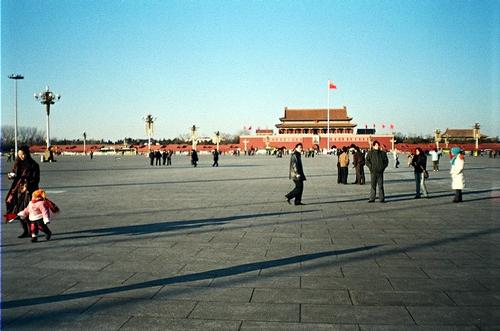 Tianmen square in BeijingPhoto: Paul Louis CC-BY-SA-2.5 no changes made
Tianmen square in BeijingPhoto: Paul Louis CC-BY-SA-2.5 no changes made
Major rivers that flow through the municipality are the Yongding River and the Chaobai River. Beijing's central urban area is located in the south of the municipality. Tiananmen Square in central Beijing is located south of the Forbidden City, the former residence of the Emperors of China. West of Tian'anmen is Zhongnanhai, the headquarters of the top leaders of the People's Republic of China.
Weather
Beijing has a humid continental monsoon-influenced climate. This gives hot, humid summers due to the East Asian monsoons. Winters are generally cold and dry with winds from Siberia. Sand storms from the Mongolian steppe can occur in the spring. There is little rain in the spring and fall. The average daily temperature in January is -3.7 °C, in July it is 26.2 °C. On average about 570 mm falls. rainfall per year, especially in the summer months.
History
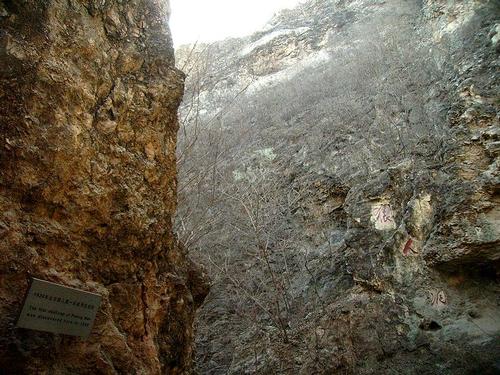 Beijing Zhoukoudian, the place where the Beijing man was foundPhoto: Mutt CC 4.0 no changes made
Beijing Zhoukoudian, the place where the Beijing man was foundPhoto: Mutt CC 4.0 no changes made
The earliest traces of human habitation have been found near Zhoukoudian Village in Fangshan District in Beijing Municipality. Fossils of the Homo Erectus have been found in those caves and they date from about 250,000 years ago. New research from 2009 even yields dates of around 750,000 years old.
In 221 BC, China was united under the first emperor, Qin Shi Huangdi, who founded the Qin dynasty. During the Han Dynasty (206 BC-220 AD), the Chinese Empire expanded into Korea, Vietnam, and Central Asia.
In 936 during the Jin Dynasty (936-947), much of modern-day Beijing was surrendered to the Khitan Liao dynasty. In 938, the Liao Dynasty founded a new capital on the site of today's Beijing. Some of the oldest historical remains in Beijing, such as the Tianning Temple, date from the Liao period.
In 1403, the third Ming Emperor renamed the city of Beijing and proclaimed that the city would become the capital of China, alongside the pre-existing capital Nanjing. Beijing became the site of a major construction project for a new imperial residence, the Forbidden City, construction took nearly 15 years from 1406-1420. When the palace was finished, the emperor moved the court to this new residence. From 1421, Beijing was the official capital of the Ming Dynasty. The system of dual capitals Beijing and Nanjing lasted until the end of the Ming Dynasty. Thirteen of the sixteen Ming emperors are buried in elaborately decorated tombs near Beijing.
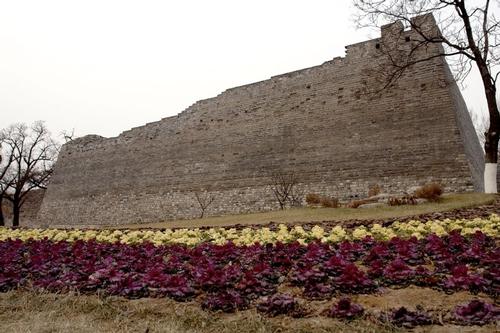 Beijing City Wall from the Ming periodPhoto: J Aaron Farr CC 2.0 Generic no changes made
Beijing City Wall from the Ming periodPhoto: J Aaron Farr CC 2.0 Generic no changes made
Beijing took its current form in the course of the 15th century. The Ming-era city walls remained until modern times, when they were torn down and replaced by the 2nd ring. Beijing is believed to have been the largest city in the world in the periods 1425-1650 and 1710-1825. During the Ming period, the Temple of Heaven was built in around 1420. Tiananmen, now a symbol of the People's Republic of China, was first built and later rebuilt several times. Tiananmen Square was built in 1651 and expanded in 1958. The Qing Dynasty was established as the direct successor to the Ming Dynasty and Beijing remained the Chinese capital. The Imperial Palace was slightly modified during the Qing Dynasty, but the Ming buildings and general layout have remained largely unchanged.
During the Second Opium War, Anglo-French troops captured the city and destroyed the Summer Palace in 1860. The Beijing Convention ended the war, forcing the Western powers to have a permanent diplomatic presence in Beijing. After the Qing emperor's forced resignation in Beijing, the new Republic of China was established, Beijing remained the capital. The Republic did not last long the leader of the revolution Yuan proclaimed himself the new emperor of China in 1915.
During the Chinese Civil War, communist forces entered Beijing without encountering resistance on January 31, 1949. On October 1 of the same year, the Communist Party of China, led by Mao Zedong, announced the establishment of the People's Republic of China in Tiananmen.
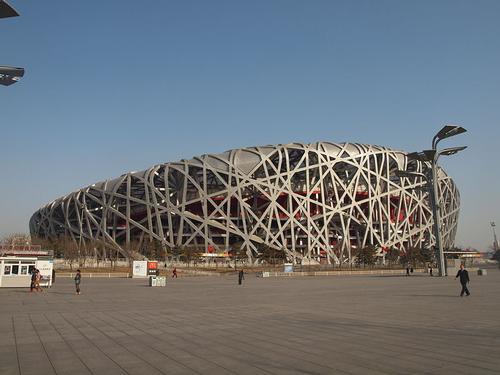 Beijijng National StadIumPhoto: Løken CC 3.0 Unported no changes
Beijijng National StadIumPhoto: Løken CC 3.0 Unported no changes
Beijing's city wall was demolished to make way for the construction of the 2nd Ring Road in 1982, the first of a series of new ring roads intended for motor vehicles rather than bicycles. On July 13, 2001, the International Olympic Committee selected Beijing as the host of the 2008 Summer Olympics. These games attracted a large number of tourists to Beijing.
Sights
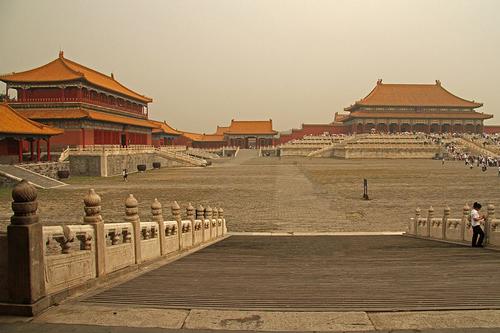 Forbidden City in Beijing Photo: Ronnie Macdonald (CC BY 2.0) no changes made
Forbidden City in Beijing Photo: Ronnie Macdonald (CC BY 2.0) no changes made
The most famous historical monument is located in the heart of Beijing. It is the huge complex of palaces, where the emperors of the Ming and Qing dynasties lived. Today the Forbidden City has been transformed into the Palace Museum with rich imperial collections of Chinese art. The sprawling complex includes 9,000 rooms. The Forbidden City is surrounded by a number of former imperial gardens, parks and natural areas.
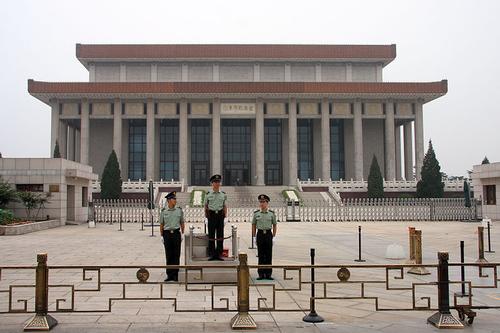 Beijing Mausoleum MaoPhoto: David Castor in het publieke domein
Beijing Mausoleum MaoPhoto: David Castor in het publieke domein
Zhongnanhai is the political heart of various Chinese governments and regimes and is now the headquarters of the Communist Party of China. From Tiananmen Square, right in front of the Forbidden City, there are several landmarks such as Qianmen, the Great Hall of the People, the National Museum of China, the Monument to the People's Heroes and Mao Zedong's Mausoleum.
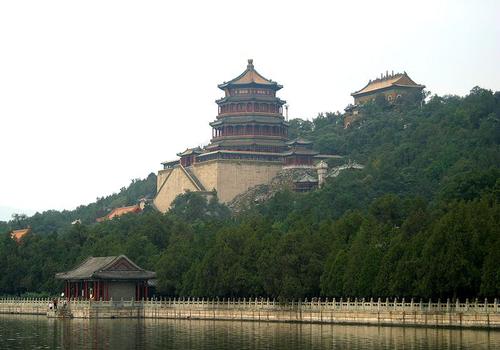 Summer Palace BeijingPhoto: Brian Jeffery Beggerly CC 2.0 Generic no changes made
Summer Palace BeijingPhoto: Brian Jeffery Beggerly CC 2.0 Generic no changes made
The Summer Palace and the old Summer Palace are located in the western district of the city. The summer palace was built in 1750 and it is a UNESCO World Heritage Site. The complex consists of imperial gardens and palaces that served as the summer residence of the Qing emperors. It is one of the best preserved monuments from this period in China.
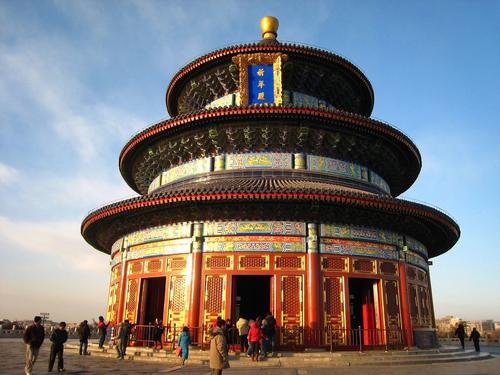 Beijing Tiantan TemplePhoto: Star5112 CC 2.0 Generic no changes made
Beijing Tiantan TemplePhoto: Star5112 CC 2.0 Generic no changes made
The Temple of Heaven (Tiantan) is a temple in southeastern Beijing. It is Beijing's most famous temple where emperors of the Ming and Qing dynasties held annual prayer meetings to ask Heaven for a good harvest. This impressive temple was built between 1406 and 1420. There are four main sections: The Round Altar, the Echo Wall, the Vault of Heaven and the Hall of Prayer for a good harvest. The acoustics in the hall of praying for a good harvest are great, even a whisper is heard throughout the hall.
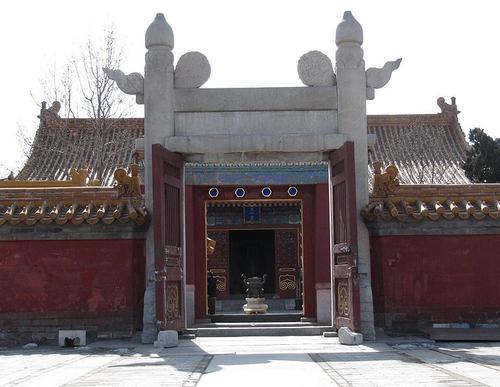 Earth Temple in BeijingPhoto: Ivan Walsh CC 2.0 Generic no changes made
Earth Temple in BeijingPhoto: Ivan Walsh CC 2.0 Generic no changes made
In the northern part of the city you can see the temple of the earth (Ditan). The Temple of the Sun (Ritan) and the Temple of the Moon (Yuetan) are located in the eastern and western districts of the city. Other famous temples are Dongyue Temple, Tanzhe Temple, Miaoying Temple, White Cloud Temple, Yonghe Temple, Fayuan Temple, Wanshou Temple and Big Bell Temple. The city also has its own Confucius temple and a Guozijian or Imperial Academy.
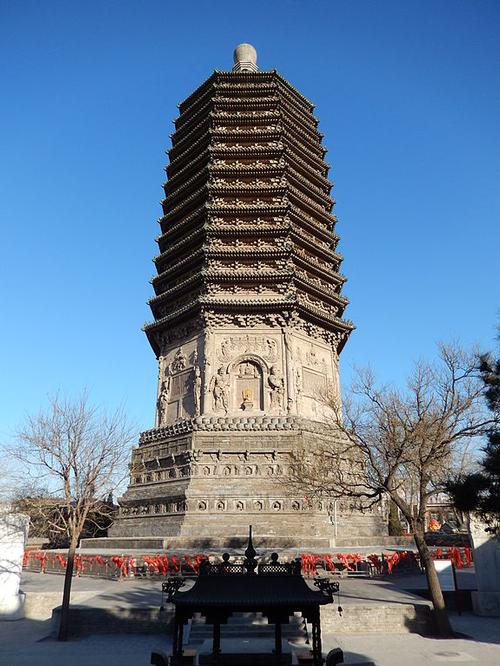 Pagode of the Tianning TemplePhoto: BabelStone CC 3.0 Unported no changes made
Pagode of the Tianning TemplePhoto: BabelStone CC 3.0 Unported no changes made
Built in 1605, the Immaculate Conception Cathedral is the oldest Catholic church in Beijing. Niujie Mosque is the oldest mosque, it is a thousand year old mosque. Beijing contains a number of well-preserved pagodas, such as the towering Pagoda of the Tianning Temple, which was built between 1100-1120 during the Liao Dynasty and the Cishou Temple pagoda, built in 1576 during the Ming Dynasty.
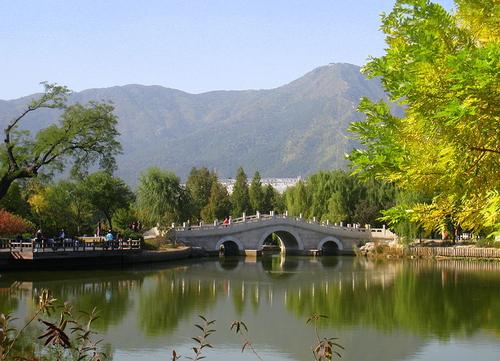 Botanical Garden in BeijingPhoto: Daderot in the public domain
Botanical Garden in BeijingPhoto: Daderot in the public domain
Beijing Botanical Garden has more than 6,000 species of plants, trees, shrubs and flowers. Cherry blossom, orchids and water lilies are the main attractions of the botanical garden. Xiangshan is also a popular beautiful public park with natural landscaping and cultural relics.
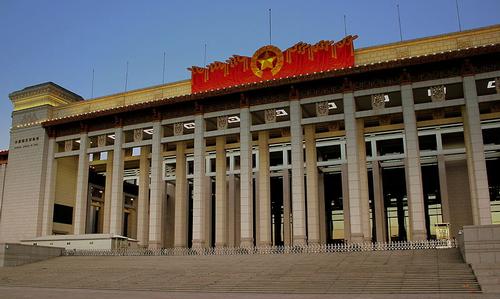 National museum of China in BeijingPhoto: Calflier001 CC 2.0 Generic no changes made
National museum of China in BeijingPhoto: Calflier001 CC 2.0 Generic no changes made
There are more than a hundred museums in Beijing. In addition to the palace museum in the Forbidden City and the National Museum of China, there are other important museums in Beijing such as the National Art Museum of China, the Capital Museum, the Beijing Art Museum, the Military Museum, the Geological Museum of the China and the Beijing Natural History Museum
Tips
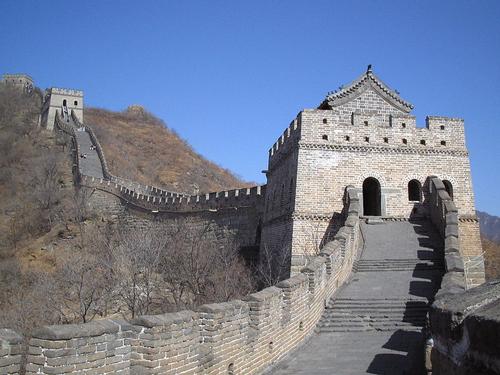 Beijing Great WallPhoto: Fabien Dany - www.fabiandany.com CC2.5 Generic no changes made
Beijing Great WallPhoto: Fabien Dany - www.fabiandany.com CC2.5 Generic no changes made
The Great Wall of China is the most famous historical site in China and is on the UNESCO World Heritage List. Easily accessible from Beijing, the Great Wall is considered one of the greatest architectural achievements in the world. The wall extends from east to west for more than 5,000 km. Construction of the wall started in the 7th century BC, when independent kingdoms took measures to protect their territory from wandering nomads. One of the most visited attractions in all of China, the Great Wall stretches from Liaoning Province to Jiayuguan, which is part of the vast Gobi Desert. The scenery and views alone are worth the trip, as is the Great Wall museum and theater.
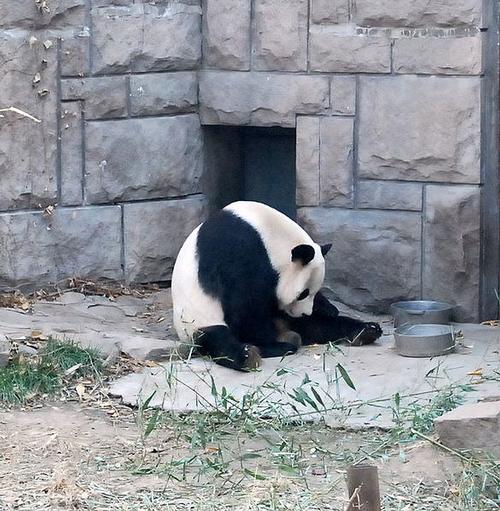 Giant Panda in the zoo of BeijingPhoto: Shizhao CC 3.0 Unported no changes made
Giant Panda in the zoo of BeijingPhoto: Shizhao CC 3.0 Unported no changes made
Beijing Zoo was established around 1900 and housed in what used to be an imperial mansion from the Ming Dynasty. With a focus on animals from China, the zoo offers the opportunity to get up close to exotic and rare animals that you don't often see elsewhere. The pandas are the main attraction for many, the gardens themselves are also impressive. Beijing Zoo is also a center of zoological research.
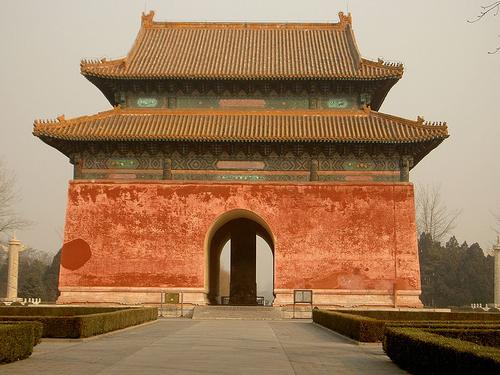 Ming graves BeijingPhoto: Ofol CC 3.0 Unported no changes made
Ming graves BeijingPhoto: Ofol CC 3.0 Unported no changes made
On the outskirts of urban Beijing, but within the municipality there are the thirteen tombs of the Ming dynasties. In the opulent cemeteries, three of the graves are open to the public. You will see a series of large halls, interconnected vaults and elaborate decorations. The Eastern Qing Tombs are just over 75 miles east of Beijing and here you can see the final resting places of the five emperors, along with 14 empresses. All around are also cemeteries and graves of princes, dukes and many others. All but one of these impressive tombs are open to the public, and the tomb of Emperor Qianlong is particularly grand.
Useful links Beijing
BBC Country ProfilesWorld Fact Book Explore all Countries
How to call
Last updated June 2025
Copyright: Team - The World of Info